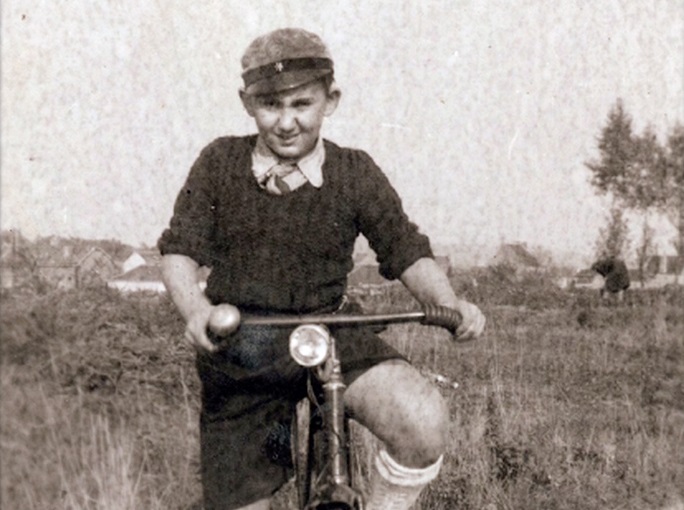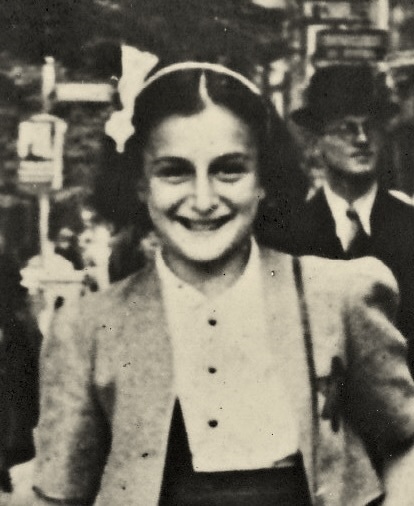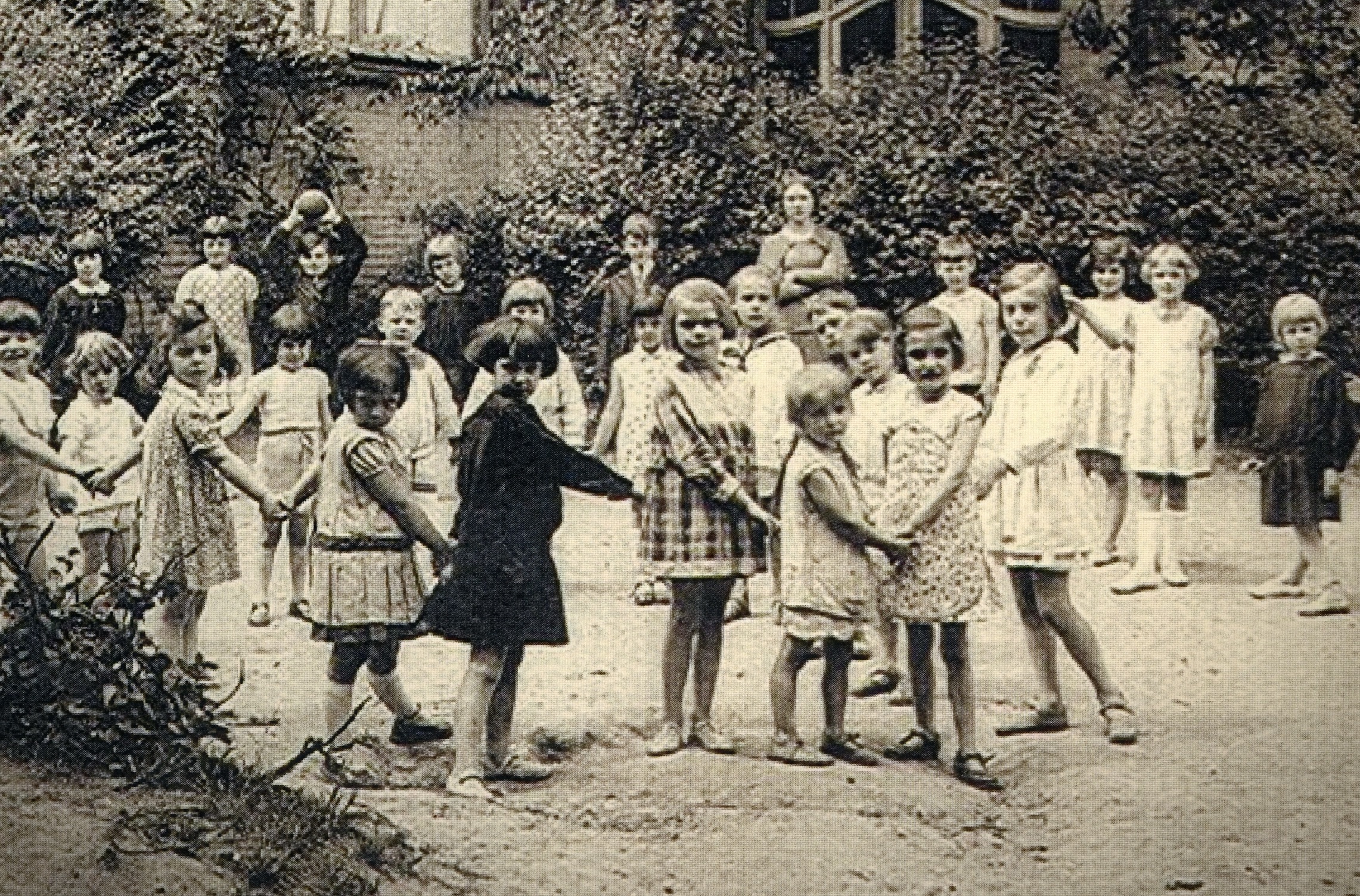A small commemorative plaque was nailed to the wall of a four-storey apartment bloc in Woluwe Saint-Pierre last June, recalling long-forgotten events from the Second World War.
Some 80 years earlier, on June 12, 1943, the Gestapo had forced their way into the building to arrest 23 Jewish people, 14 of whom were children. The prisoners were held at Kazerne Dossin barracks in Mechelen – now a museum and memorial – before most were deported to the Nazi concentration camps, and their ultimate deaths.
The memorialisation of this horrific event was made possible in part thanks to a mammoth investigation by author and historian Frédéric Dambreville that culminated in his extraordinary book, Les Disparus de Gatti de Gamond.
The French painter, engraver, and writer moved to Brussels over a decade earlier and took up residence on 10 Rue André Fauchille – the building in question. The building dates to 1907, although the grand façade of the time, including an elegant Art Nouveau frieze, was replaced with a plain front in 1954.
It was an inscription on the building’s chimney that sparked his curiosity and led him to discover the site’s former identity as a boarding school called Gatti de Gamond, which had housed several Jews – mostly children – as well as members of the Belgian resistance, until the Nazi roundup in 1943.
Dambreville’s curiosity quickly turned to obsession. He embarked upon a ten-year quest to reveal the full story, chasing every trail and tracking down people. “If we point to one spot of Brussels and analyse it, we’ll find the whole world,” says Dambreville, who spent 25 years working with marginalised kids in Parisian suburbs before moving to Brussels.
These entangled human strands of experience live in Dambreville: it takes a mere mention of a person from his book to spark a full recital of their family history. But his mission is more than an archivist: it is to “seek the children’s voices,” and reassemble the lives they couldn’t live.
Pupils and castaways
The boarding school was named after Isabelle Gatti de Gamond, a 19th-century champion of female secular education. Odile Henri-Ovart and her husband Rémy Ovart, who took it over in 1925, both became involved in the Belgian resistance against the Nazi occupation that began in 1940. Unbeknownst to her husband, Odile hid Jewish castaways on the premises, including a German-Jewish couple. Meanwhile, a neighbouring structure hosted other members of the resistance, whose plight is also recounted in Dambreville’s book.

One of the bedrooms inside
In 1943, the German secret police, the Gestapo, began operations to weed out Jews “harboured by Aryans” and were led to Gatti de Gamond. Dambreville believes this may have been connected to a recently failed raid at an Anderlecht convent, where 14 Jewish girls had been hidden. The mother superior had persuaded the Gestapo to come back the next day. With this extra time, the resistance had staged a fake kidnapping, tying up the mother superior and whisking away the girls.
After this humiliation, the Nazis and an infamous Jewish informant nicknamed Gros Jacques might have seen the boarding school as an opportunity for revenge.
The Gestapo arrived at 4am on Saturday, June 12. They set up a table to interrogate all the occupants. The headmistress and her husband were both arrested and would die after being deported to death camps (they were later recognised in 1993 as “Righteous Gentiles” by Yad Vashem).
Their daughter Andrée was also arrested and tortured. Of the 14 children arrested, nine would perish. But these are a best guess amid the horrific confusion. “I wrote the book to escape from numbers,” Dambreville says.
Rehumanising history
The main thread of the book is the unpublished testimony of Bernard Lipsztadt, one of the children, who later escaped from the Dossin barracks. Over the years Dambreville found new witnesses through connections of connections and faces caught in photos. His research included time spent in the Royal Archives where he scoured kilometres of underground archives.

Bernard Lipsztadt
Returning the files after he was done with them always felt like “sending them back to oblivion.” At one point, when Dambreville came across a person’s identity card, he felt as if he were holding “a piece of human skin.”
He found vital clues in the archives. “These were security files, for controlling and destroying people. But finally, I could turn it back on them. I could make them into documents of life,” he says.
His book reveals a time of crossed allegiances, confusion and treason. “It’s a police investigation,” says Dambreville. “I found the children, the victims, the culprits. I named them. I have the signatures of those who ordered the roundup.”
But he was not interested in vigilante justice. His book is about the lost children and giving them dignity and peace. “I replace the children in the environment from which they were torn. And so, it’s a human story. It’s about re-humanising history,” he says.
Twelve years ago, Dambreville was able to find Mireille Rapoport, one of the Jewish children at the boarding house who survived the raid. She showed him two notebooks she had kept from her time at Gatti. She’d never opened them since, but they were filled with messages from the other children. They helped him to fill in gaps, uncovering old secrets that Dambreville could turn into a story.
Portraits from the past
Most of the children were born in Belgium, but some came from abroad: two were born in Germany, another in Greece and one in Poland. All were from immigrant families, mostly from Poland but also from Hungary and Lithuania.

Children in the garden
One child was Rachel Tomar, born in Antwerp in 1930, and 12 years old at the roundup. Rachel had been sent to stay with her aunt in Brussels while her mother remained in Antwerp to wait for her husband, who had been arrested and deported to France.
Rachel lived in several places in Brussels before being given over – along with her cousin Greta – to the care at Gatti de Gamond. There, she earned the nickname “la Gobeuse” (“the gobbler”) because she believed everything.
When the Gestapo turned them out, Rachel refused to admit she was Jewish, insisting on her false name, Jeanne van Ingelgem, and a false address in Molenbeek. She maintained her cover despite several beatings but was separated from the other kids and transported in the 21st convoy from Mechelen to Auschwitz. She died in early August 1943.

Rachel Tomar
Rachel’s cousin Greta was luckier. Daughter of Hungary-born (now Romania) diamond dealer David Katz and Czechoslavakia-born (now Ukraine) Blanka Farkas, Greta was born in Antwerp three years after Rachel. Though she’d arrived at Gatti de Gamond at the same time, her father unknowingly saved her life when he brought her home on June 11 because she was unwell.
After the war, Greta lived at Place Montgomery for 15 years without knowing that she was barely 200 metres from her prior hiding place. She said her cousin Rachel had been like a sister to her: Dambreville says she could barely mention her name without crying. She passed away in 2008.
Many stories remain incomplete. There was also a mysterious boy who hid in the attic. He was in love with Mireille and signed his name in her notebook: Simon. Dambreville never found him.
There was a non-Jewish girl Fernande, a friend of Bernard Lipsztadt (later Lipstadt), who had been at the boarding house the night of the roundup. Lipsztadt searched for Fernande after the war to discover that all her family had been killed in a car crash.
There was Boris-Maurice Gurman, an eight-year-old born in Anderlecht and living in Rue de Russie, in Saint-Gilles. He was the third child of parents Bernard and Esther, whose first two died young. Dambreville found a poignant photo of Boris in a suit and tie.

Boris Gurman
And then there is the false attic, a hiding spot between floors spotted by Dambreville himself when he lived in the building. Who was hiding there? “That’s an enigma that’s haunted me for 12 years.” Tattered wallpaper from the false attic – the “only concrete trace of the boarding school” – appears on the cover of his book.
Letters of support from historians, archivists and others helped Dambreville to get an artistic grant, which allowed him access to archives with texts like the Gestapo documents. Some events publicised the book upon its publication, notably Brussels’ Centre Communautaire Laïc Juif (CCLJ) and the Kazerne Dossin museum. There was even support from groups like the Auschwitz Foundation and la Fondation de la Mémoire Contemporaine.
In 2018, 15 Stolpersteine, or ‘stumble-stones’ were installed outside Gatti de Gamond: these are brass-plated paving stones inscribed with the name and fate of a Nazi arrestee taken away on that fateful night. Dambreville’s exhaustive research, however, led him to spot several mistakes in the stones for the Gatti de Gamond roundup. The original list was based on a 1943 letter imploring Belgium’s Queen Elizabeth to intervene to save the captured children – but it was incomplete.
The mistakes have been acknowledged but the names have not yet been replaced. Dambreville was frustrated that there was not a more comprehensive and accurate documentation of the era. “It makes you despair,” he says. “But at the same time, there’s hope.”
Bridge to kids today
Last year Dambreville was contacted by a French librarian, Guy Marchand, who had worked on memorialising the events in the French town of Izieu where 44 children and seven teachers were rounded up on April 6, 1944. Having read Dambreville’s book. he wanted to teach lessons based on the Gatti de Gamond roundup with schoolchildren from his district, Molenbeek.
In some ways, it was an unlikely partnership. Woluwe Saint-Pierre is an affluent, white neighbourhood now, as it was then. The Gatti de Gamond’s pupils were children of ambassadors and the structure featured exquisite furnishings, including a grand piano.
By contrast, the hidden Jewish children came from stricken communities at the margins of their home societies. “That’s to say, the poorest kids in the world arrived in the richest houses,” Dambreville says. “And now, our society’s margins are found in places like Molenbeek: Muslim, working class and disenfranchised.”
Dambreville, who worked for 25 years working with adolescents in the challenging eastern suburbs of Paris, found common cause with Marchand, who spent 35 years teaching in Molenbeek, a district unfortunately better known for harbouring terrorists.
Together, they set up a project gathering kids from wildly different backgrounds. In just one working group of four, for example, was a Guinean, a Ukrainian, a Moroccan-Belgian, and a Syrian girl born in Idlib during the Arab Spring. Others came from Iraq, Afghanistan, the Palestinian territory, Romania, Russia, Bulgaria, Congo, Ethiopia and more. Many were refugees themselves, gathering to discuss the Shoah but not as a “Jewish” issue; but rather as one concerning all children’s rights to live and be seen.
The Molenbeek municipality’s educational unit and mayor got behind the project. Supported by Marchand and their teachers, the children gave the Gatti de Gamond story a new life. They toured the spots mentioned in the book, wrote biographies of each character, and drew comic strips of different scenes.
Dambreville was astonished by the children’s reactions. “They took notes in front of the Gestapo building, in front of the Saint-Gilles prison, with an unbelievable respect,” he says.
The result was an exhibition earlier this year in time for the 80th anniversary of the raid, called “Ne meurent que ceux qu’on l’oublie” (“Only those who are forgotten die”). Its opening got attention: the Israeli and German ambassadors were there, along with the Belgian Education Minister as well as the local mayor – and children, one of whom stood up and spoke at the event.
The children’s engagement gave Dambreville some recompense for his Herculean efforts. In one of many letters of thanks, one wrote: “Thanks for having respected the dead.” He saw the letter as a sign that the lost children of Gatti de Gamond were no longer victims of the Holocaust but humans with their own stories of oppression, destruction, escape, and survival. “It’s about bringing out something that has been despised, forgotten or erased – giving it a name and putting it back into the family,” he says.
Meanwhile, a new commemorative plaque outside 10 Rue André Fauchille has a final statement: “Souvenons-nous toujours! / Laten we nooit vergeten!”
But, as Dambreville says, this can take a lot of work. “You have to understand that at the beginning, there was nothing,” he says. “No trace, no clue – except an inscription on a chimney.”

